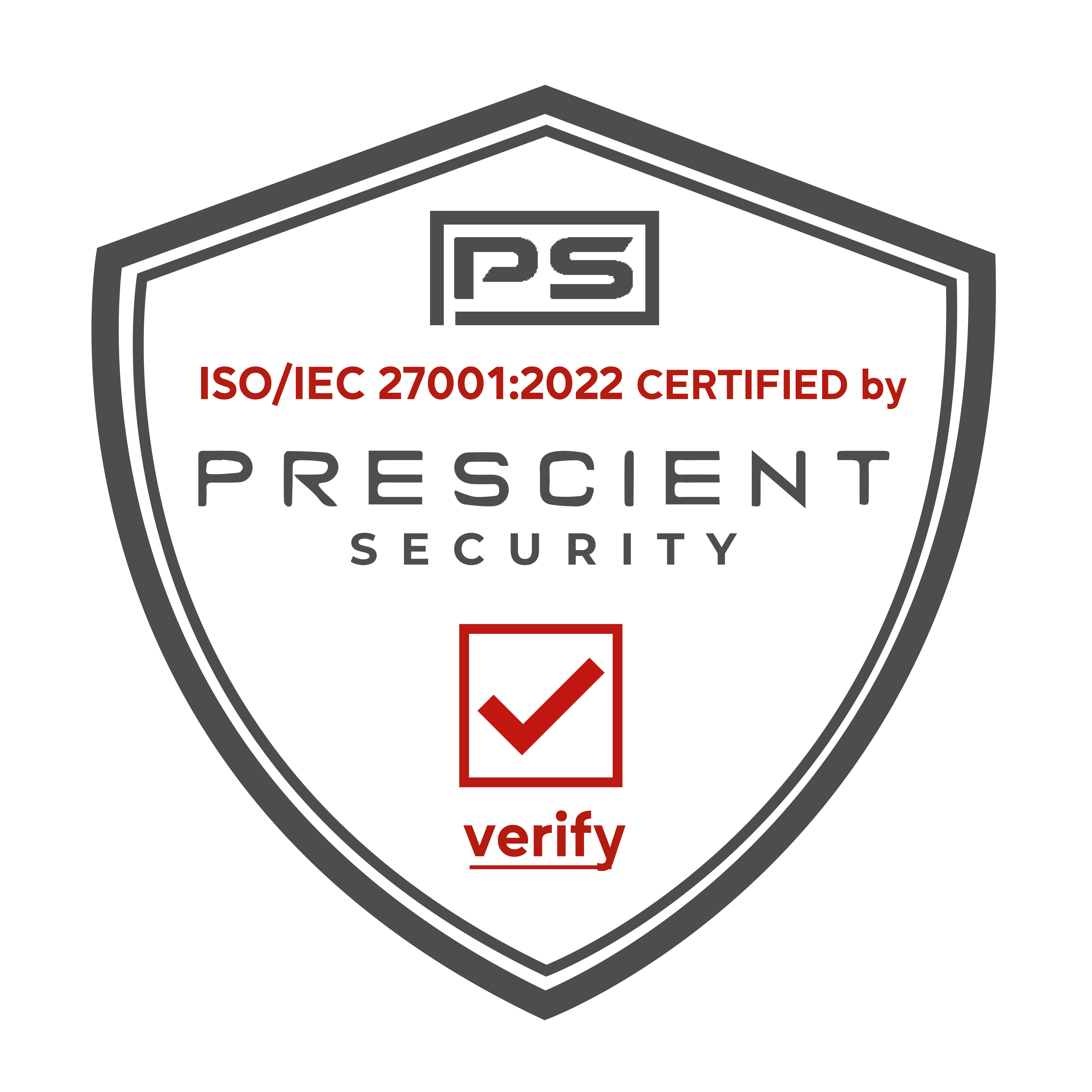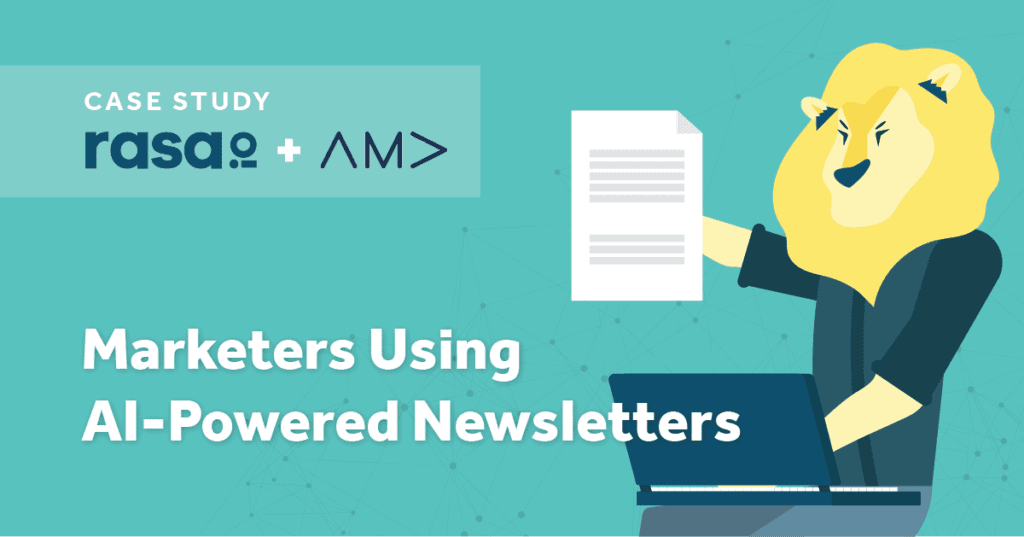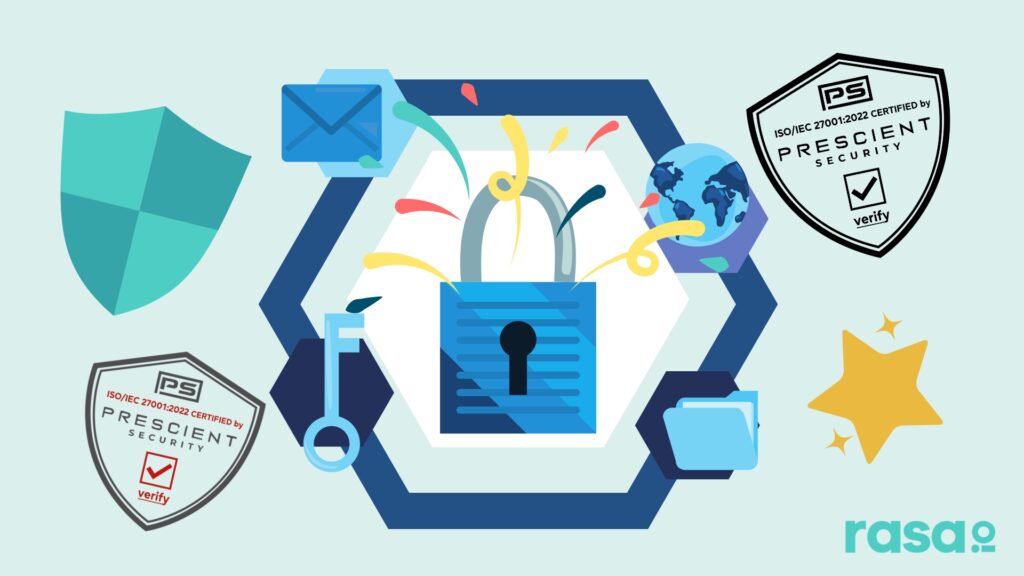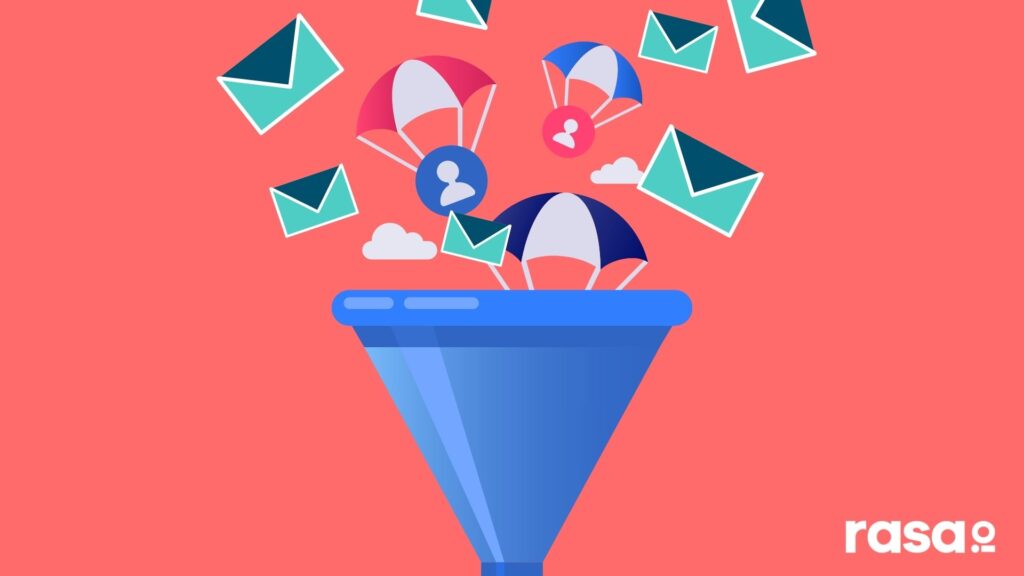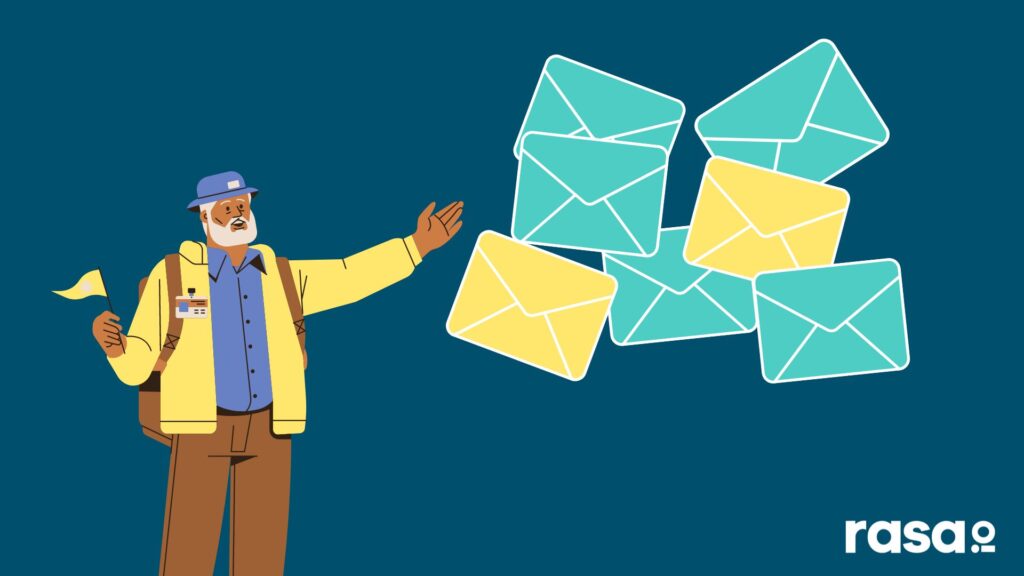Learn the best practices for email marketing campaigns that cultivate clients and drive sales.
The real estate industry runs on relationships. You need a base of prospective clients who trust you and your expertise.
One of the best ways to build that base is email marketing.
I know – it doesn’t sound like cutting-edge digital strategy. Email is practically old-fashioned these days.
But that’s part of the key to its effectiveness.
In the age of mass communication through social media, email feels personal. It’s the digital equivalent of steady eye contact and a firm handshake.
You can enhance that one-on-one feel by getting to know your audience, and sending content that’s relevant to their needs. And you can take advantage of tools that automatically analyze, personalize, and target email campaigns.
That’s probably why the majority of marketers find that email generates the highest return on investment out of all digital channels – even though it occupies a quarter or less of their time.
Follow our best practices for email marketing, and you’ll be building a highly engaged audience in no time.
What is email marketing?
Overview
Okay, so you’re convinced that you can use email marketing to grow your real estate business. But what does that actually involve?
The heart of it all is the group of people who have signed up to receive emails from you. That pool of recipients is known as your subscribers or your list.
You can communicate with your list in a variety of ways, from promotional emails to congratulatory messages after home closings.
Ideally, every email should include a call-to-action (CTA) – something concrete that the reader can do to deepen their engagement. Common examples include:
- Navigating to your website
- Signing up for promotional offers
- Downloading an informational guide
- Setting up a consultation
- Sharing on social media
Newsletters
One great tool for realtors is a newsletter: an email campaign providing regularly scheduled content that’s relevant to buyers and sellers of homes.
By providing subscribers with value at no cost to them, you build loyalty and credibility. And showing up regularly in their inboxes is a great way to stay top of mind.
Newsletters can also help you gather information about your client base, by paying attention to how they engage with your content. Noting the types of headlines that readers are clicking will give you hints about their needs and interests.
Really? Newsletters?
If email sounds old-fashioned, newsletters sound positively archaic. But they get real results.
Campaign Monitor reports that email newsletters have higher engagement rates, lead to more sales, and generate more revenue than other digital marketing channels.
Some estimates put the average ROI for this kind of marketing at roughly $44 for every $1 spent.
Not bad for something that sounds like that email from your aunt that you delete every Christmas.
Getting Started
Ready to put these insights to work? Here are some best practices for successful newsletter marketing.
1 – Remember You’re A Guest In Their Inbox
Step one is always to get permission. Sending emails to people who haven’t signed up for them is generally worse than useless.
Many experts recommend using double opt-in to ensure that everyone on your list really wants to be there. Start with a concise, eye-catching signup form, emphasizing the value that your newsletter offers.
Once someone opts in, follow up with a welcome email asking them to confirm their subscription by clicking a link.
Next, you need to make people glad they’ve signed up by following through with great content.
Fortunately, as a real estate pro, you have plenty of valuable insights to share. Anything that someone might want to know about buying, selling, owning, or renting a home is fair game.
Here are just a few topic ideas:
- House hunting strategies
- Guides to home financing
- Profiles of in-demand neighborhoods
- Home renovation tips
- Discussions of market trends
- Articles on architectural history
You might have noticed that I didn’t mention lists of available properties, or information about your services. That’s not an accident.
It’s crucial that you know when to pitch a product.
That doesn’t mean you can never include content that markets your services.
But you’re trying to build a relationship with your subscribers. Don’t be that friend who tries to sell their homemade essential oils to everyone at the party.
A good rule of thumb is that about 90% of your newsletter’s content should aim to educate and entertain your audience. And attempts to drive sales should be closer to the end than the beginning.
2 – Avoid Common Mistakes
There are a few simple things that can separate a good newsletter from a bad one.
First of all, avoid bland or confusing subject lines. An email newsletter is still an email – it’s no good if no one opens it.
Your header should give a clear idea of what’s inside and why it’s useful – vague subjects don’t motivate clicks.
And special characters, all-caps, or extravagant promises can cause your email to be dismissed as spam.
One simple but effective option is to use the title of your lead article. “Ten Tips For Securing Home Financing” is better than “Home Loans Are Where The Heart Is” – and a lot better than “Get The Most $$$ For Your Home”.
This advice also applies to your CTAs. Specific invitations like “Find Your Dream Home” drive more responses than generic ones like “Learn More”.
Use images sparingly. Too much visual content will trigger spam filters, and many email clients disable images. Your email should be legible even without graphical elements.
On a related note, make sure your emails are optimized for mobile. Nearly half of all emails are opened on smartphones or tablets.
Keep it brief. Don’t make readers scan endlessly – somewhere between 3 to 6 items is the sweet spot.
If you have more than one full-length article, stick with catchy headlines and subheadings within the body of the email. Let interested readers click through to your website for the full text.
3 – Use An Autoresponder
How do you follow up when your subscribers begin responding to your well-crafted calls to action?
You could keep track of everyone who downloads an e-book, clicks on a property listing, or otherwise signals their engagement, and personally follow up with an email.
Just kidding! You can’t do that if you want to get anything else done in your workday.
You’re much better off using an autoresponder – a digital tool that can send a pre-written email, or sequence of emails, when a subscriber takes a specific action.
Let’s say a reader clicks on an article about selling a house. The next day, your autoresponder tells them about your free webinar: “Writing A Listing Description That Pulls In Buyers”.
They sign up for the presentation. Three days later, the autoresponder invites them to schedule a one-on-one consultation with you. They reach out to set up a meeting.
That subscriber has just moved several steps closer to becoming a client, without you lifting a finger.
Autoresponders also help you maintain engagement with your list. Use them to schedule things like birthday messages, or automated follow-up emails for clients who haven’t been active in a while.
4 – Analyze and Segment
If you’re new to email marketing, your first newsletter won’t be perfect. You’ll need to track how your audience responds to your content, so that you can improve it over time.
Key indicators include:
- Open rate – how often are subscribers opening your email?
- Click-through rate – what percentage are engaging with your content?
- Conversion rate – how often do readers follow through on CTAs?
- List Growth – how rapidly is your subscriber base expanding?
When you spot a need for improvement, follow up with A/B testing. Send out two versions of an email with one and only one difference, and observe which one gets better results. This lets you test the effectiveness of things like subject lines, CTAs, and article titles.
As you learn more about your audience, you can begin to segment your list into categories, and tweak your content to fit the recipients.
One useful step for real estate business is to divide your list between prospective buyers and sellers.
Let client actions drive further segmentation. Did a subscriber click through several articles about finding a space for a small business? Shift them to the portion of your list for commercial property buyers.
You can automate a lot of this work with email marketing tools. The more carefully you tailor your parameters, the less work it takes to convert subscribers into sales.
Final Thoughts
Hopefully all this talk about click-through rates and calls to action hasn’t obscured the key point about email marketing:
It’s all about relationships.
When a reader subscribes to your list, it’s the beginning of a conversation. Don’t jump straight to the hard sell. Take the time to establish trust, listen to their concerns, and act as a resource.
If you do it right, you won’t have to badger them to hire you – they’ll reach out to you.
Find great tools to manage your newsletter marketing campaign at rasa.io.




